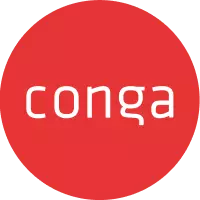
Why Operational Excellence Starts with a Well-Run CLM

In today’s fast-paced business environment, Contract Lifecycle Management has emerged as the difference between inefficient manual contract processes that hamper revenue generation and automated, consistent, compliant contract processes that help drive business growth. When implemented effectively, a CLM system can transform the contracting function into a powerhouse of operational efficiency, risk management, and strategic value. This blog explores the best practices of implementing a well-run CLM system and ensuring optimal alignment of people, processes, and tools.
The level-up of an optimized CLM system
A CLM system is much more than a digital filing cabinet for contracts; —it is the operational platform for managing agreements throughout their lifecycle. A robust, well-implemented CLM system delivers significant efficiencies, including:
- Faster speed to revenue
Streamlined contract approval processes reduce the time required to close deals. Especially in industries where speed is critical to capturing market opportunities, this kind of agility becomes a competitive advantage. - Improved compliance and risk mitigation
A CLM system ensures that contracts adhere to regulatory requirements and compliance policies. Real-time tracking and audit trails provide transparency, making it easier to identify and address potential risks. - Enhanced efficiency
Automating processes such as contract creation, negotiation workflows, and renewal alerts saves time and reduces errors. This enables teams to focus on strategic initiatives, selling, and customer success instead of getting bogged down in manual administrative tasks. - Data-driven decision making
Modern CLM systems provide actionable insights through analytics and reporting, enabling teams to identify trends, manage resources better, and make more informed decisions. - Cost savings
By reducing manual tasks, improving negotiation outcomes, and avoiding penalties or missed deadlines, a well-run CLM system can significantly lower operational costs.
Characteristics of high-performing teams
To reap the full benefits of a CLM system, teams must embrace best practices that enable success:
- Process excellence
Start with clear, standardized processes. Map every stage of the contract lifecycle, from request to renewal, and ensure that these workflows align with organizational goals. A strong foundation of well-defined processes ensures that technology supports operations rather than complicating them. - Technology alignment
The right technology will complement your processes, not dictate them. Choose a CLM system that can scale to support growth, integrates with existing tools like CRM or ERP systems, and supports automation where it makes sense. - Cross-functional collaboration
Contracts often involve multiple stakeholders, including legal, finance, procurement, and sales. High-performing departments prioritize collaboration and ensure that their CLM system facilitates seamless communication across teams. When a CLM is aligned across departments, contracting processes are quicker, more consistent, and easier to manage. - Ongoing training and adoption
Even the most advanced CLM system won’t deliver results if people don’t use it effectively. Invest in training and encourage user adoption by demonstrating how the system adds value to their daily work. Tapping an implementation expert to assist with your ongoing education guarantees you are getting the latest knowledge. - Continuous improvement
Regularly evaluate your CLM processes and tools to identify areas for improvement. Incorporate user feedback and leverage analytics to fine-tune workflows and optimize system performance. Regularly review product release announcements from your CLM provider.
Marrying good process with great technology
The most successful organizations understand that the key to achieving operational excellence is the synergy between well-defined processes and well-calibrated technology. Start by mapping out your existing contract management processes, identifying bottlenecks, and establishing clear needs and objectives.
Next, select a CLM system that aligns with these needs and objectives. Features such as AI-powered clause analysis, automated workflows, and customizable dashboards can transform cumbersome processes into streamlined, efficient operations.
Remember, technology is only as good as the processes it supports. To avoid replicating inefficiencies, address process improvement before implementing a new system.
Conclusion
A well-run CLM system enables operational excellence, higher efficiency, better compliance, and strategic value. By adopting best practices and focusing on the interplay between process and technology, businesses can reach new levels of operational maturity.
Take the first step toward transforming your contracts function by investing in a robust CLM system and leveraging experts to implement it effectively for you. The future of high performance starts today.
Conga and Qualitas: a winning strategy
Conga and Qualitas are industry leaders in transforming contract management through innovative solutions and expert guidance. Together, Conga and Qualitas bring unparalleled expertise and cutting-edge technology to the table, enabling organizations to achieve high performance and maintain a competitive edge.
About the authors
Lauryn Haake, President @ Qualitas
Lauryn left big consulting to start Qualitas Consulting Group with a simple premise: focus on quality and do what’s right for the client. Leveraging a diverse background that combines law firm support, information technology, legal department operations, legal department software solutions, and consulting, Lauryn transforms messy problems into elegant solutions. Lauryn holds a Bachelor’s Degree in Business and Finance from the University of Missouri-Kansas City and a Master’s Degree from Rockhurst University in Information Systems.
Henry Somers, Regional Vice President @ Conga
Henry has spent the past 14 years driving growth and innovation in the enterprise cloud applications space. He currently leads sales for Conga’s West Region, bringing a customer-first mindset and a strong focus on operational excellence. Prior to joining Conga, Henry led Oracle’s CX Strategic Accounts team across North America, delivering transformational outcomes for enterprise clients. Henry is known for cultivating high-performing teams and enabling organizations to navigate complex digital transformation journeys. His leadership is instrumental in guiding customers through the evolving demands of contract automation and revenue operations.



